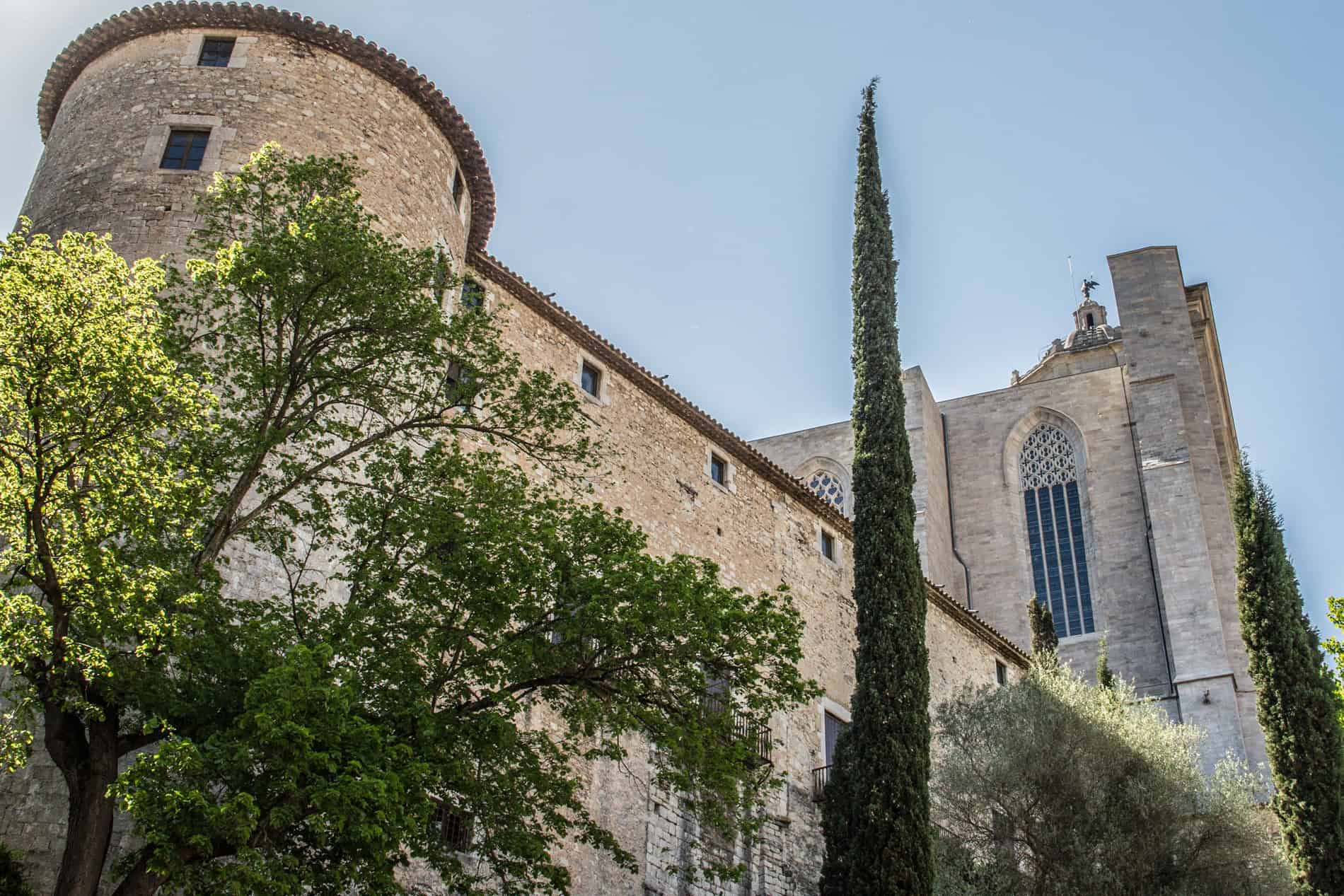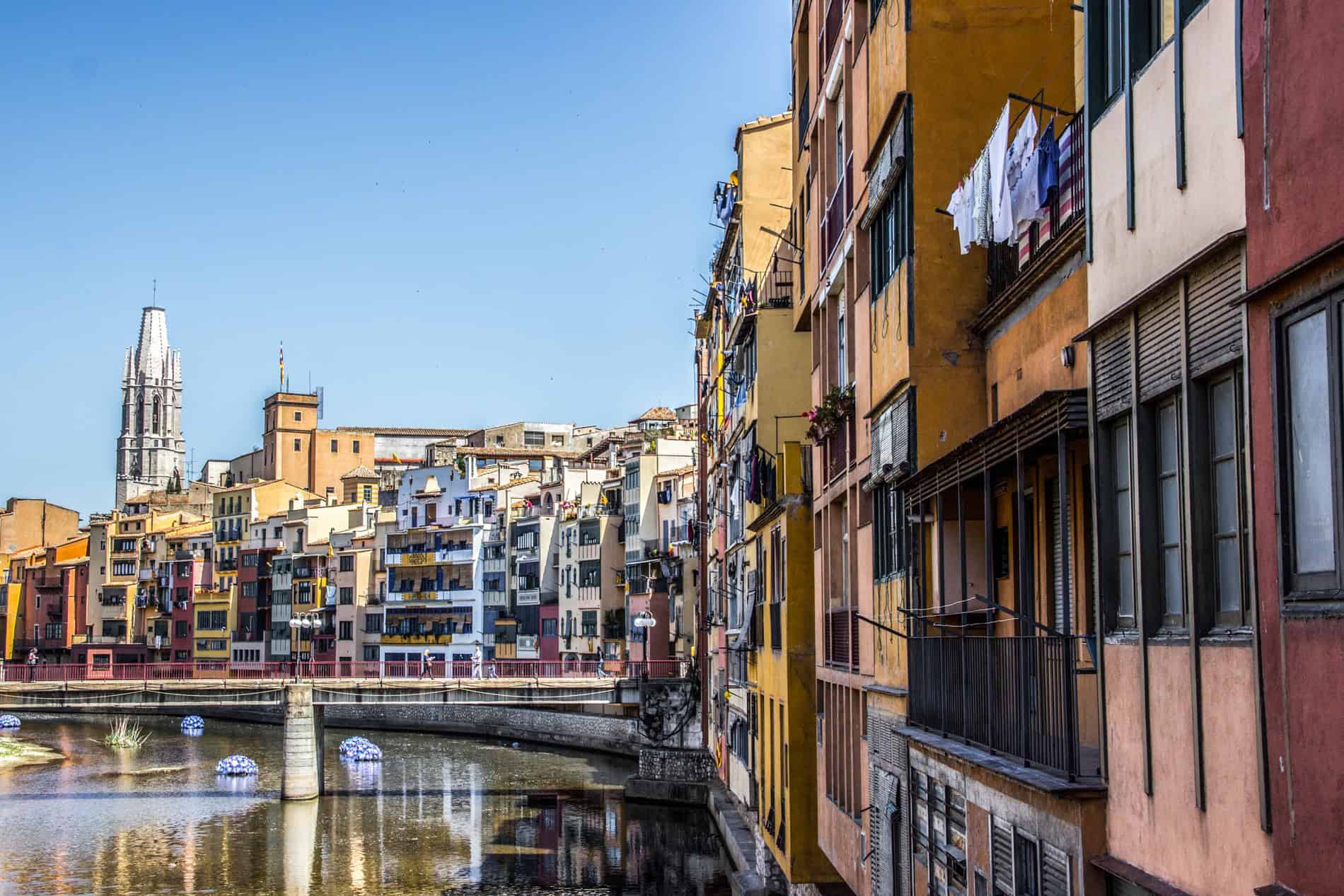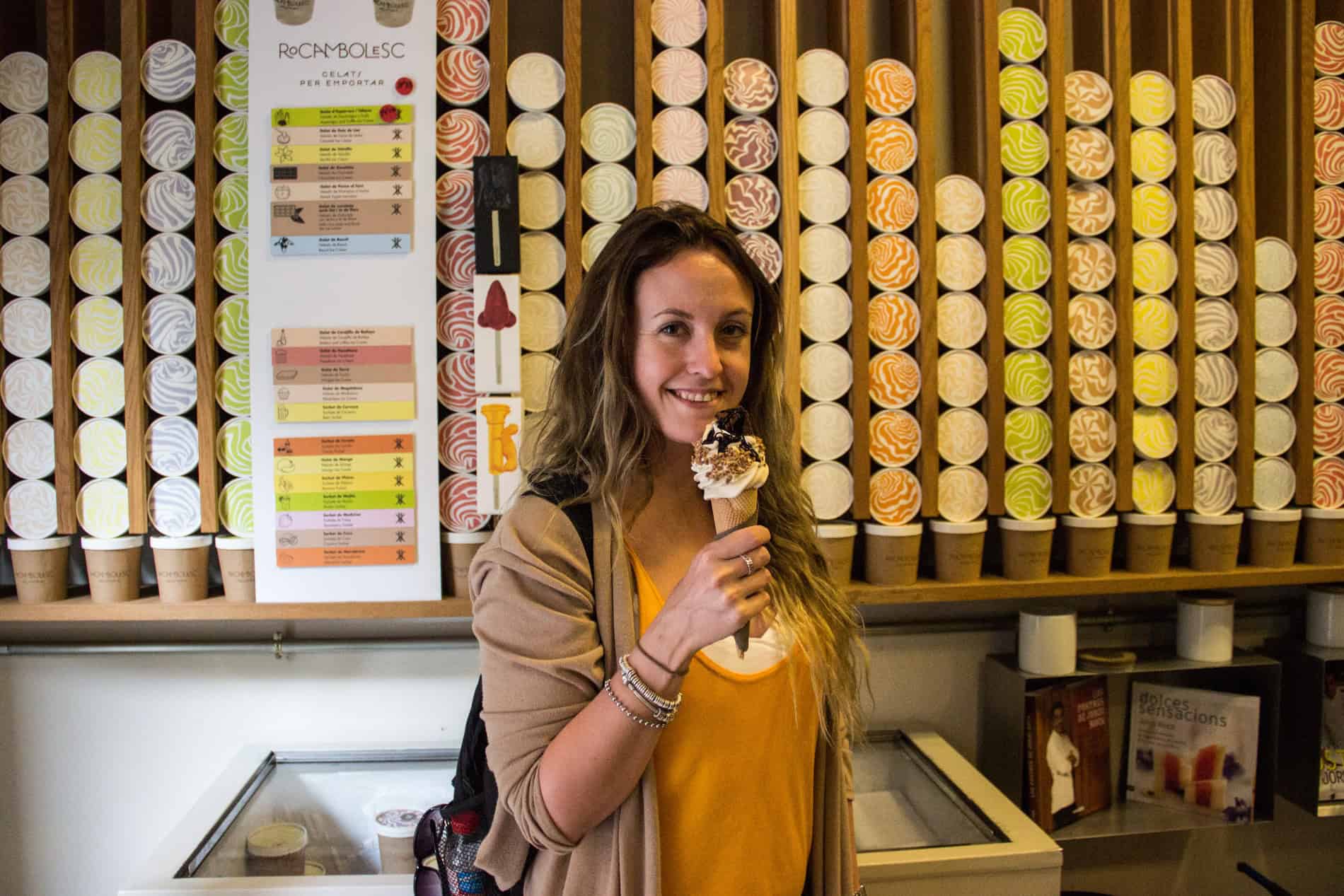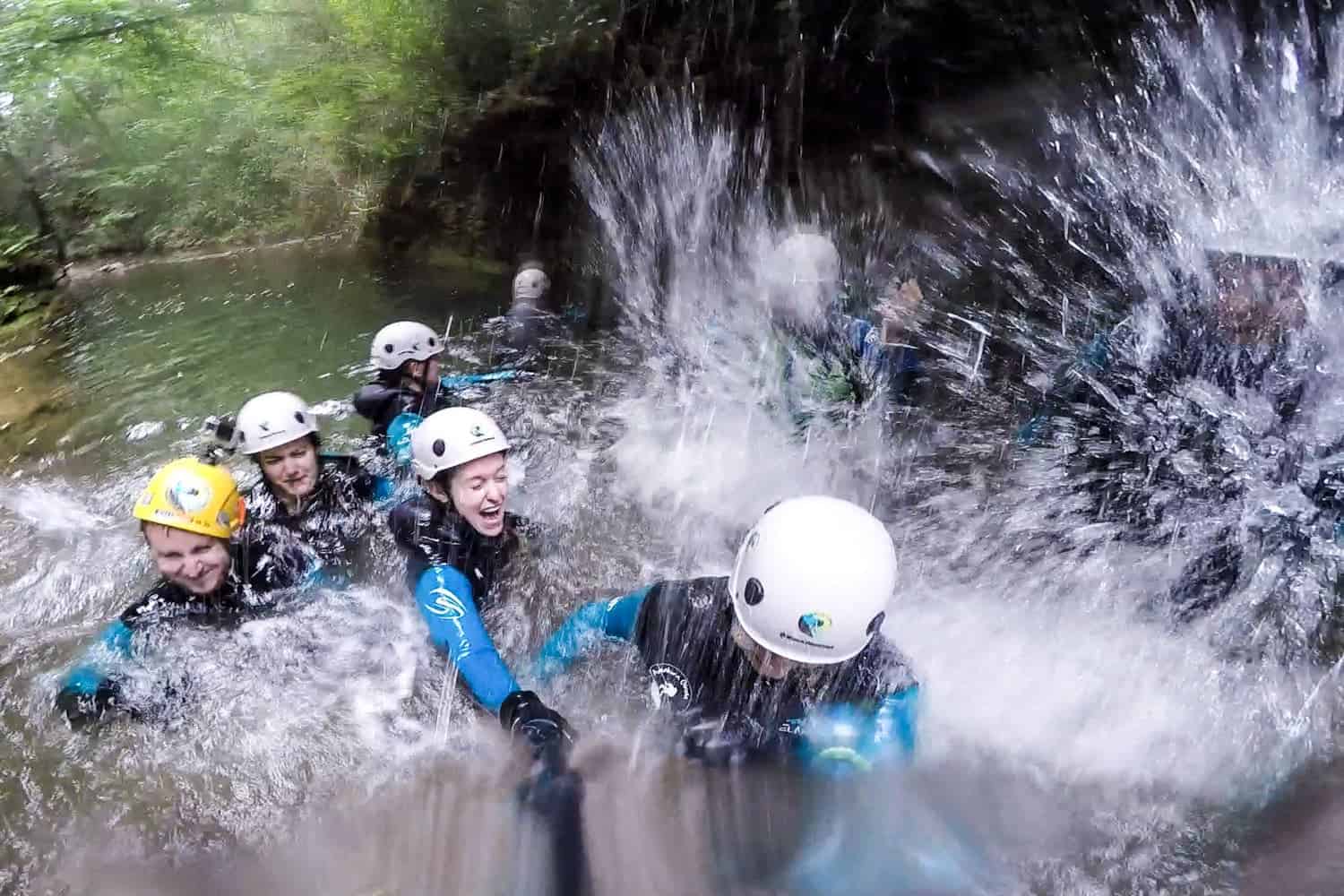Disclaimer: This post contains affiliate links to handpicked partners, including tours, gear and booking sites. If you click through or buy something via one of them, I may receive a small commission. This is at no extra cost to you and allows this site to keep running.
Catalonia, Spain is more than Barcelona. Get to know another historical corner of Spain with these things to do in Girona.
Visiting Girona, Spain not only turns the resort reputation of Costa Brava on its head but shows how there’s more to Catalonia’s independent streak and unique customs than its brimming capital of Barcelona.
Only 90 minutes away, the old city of Girona has a deep-rooted historical charm and culture dating back more than 2,000 years. And it’s just as deserving of attention.
This guide will show you the cultural things to do in Girona to dig deeper into how the city is a preserved pocket of history that is also a gateway to the surrounding region of Gironés, which unearths the beautiful patchwork of the countryside and villages of northeastern Spain.

Looking for the things to Do in Girona, Spain? Start here.
Contents
Things to Do in Girona – The Walkable, Historical City
Even if you are day-tripping or squeezing in an overnight stay, Girona is compact enough to navigate and get your fix of ‘preserved city’ feels. I spent two days in the city, taking in its scenic and culinary highlights, before exploring the green surrounding it. The Medieval and Jewish Quarters are also famed as filming locations of Game of Thrones in Girona, so a 2.5-hour Games of Thrones Tour on a loop from the Cathedral is a dramatic way to navigate the historic centre.
Start in Barri Vell, Old Quarter
Girona is easily explored by foot and the Barri Vell (Old Quarter) – also known as the Golden Triangle – is the best place to start your exploration of the medieval set-stone streets and alleys, ruins and former city foundations.

Take a walking tour in Girona and the Golden Triangle area.

Catalonia flags in Girona city, Spain.

Beautiful narrow streets of Girona’s Old Quartier, Barri Vell.

The beauty of the old and narrow laneways in Girona’s medieval old quarter.
Girona Força Vella Fortress and Cathedral
Girona is well known for its medieval history, being one of the many medieval towns and cities in Costa Brava. However, it also has a rich Roman past. The Força Vella Fortress was built by the Romans in the first century BC and was very well protected by a defensive rampart. It remained unchanged until the year 1,000, and today, you can still see parts of the walled fortress.
The Roman ruins merge with the fortified enclosure of the Medieval Quarter, an extension of the existing Roman walls in the 14th and 15th centuries. Newer ramparts were constructed on and around the Roman foundations, and you can see sections of these as you wander along the city’s walled walkways.

Parts of the Roman Força Vella Fortress in Girona.

The still-standing Girona city Fortress walls.
At the heart of the Força Vella Fortress is the Cathedral. Built between the 11th and 18th centuries, this place of worship is an architectural cache and stack of artistic styles. From the Romanesque tower and cloister to the baroque façade and steps, the cathedral is a timepiece of the ages. Take note of the gothic nave built between the 15th and 16th centuries, the widest of its kind in the world at 23 metres.

The impressive sculpture-clad facade of the Força Vella Cathedral in Girona.
Laneways and Viewpoints of the Jewish Quarter
While in the Força Vella, a labyrinth of narrow streets will mark your arrival in the Jewish Quarter (also known as ‘The Call’). These lanes and alleys were home to Jews from the 9th to the 15th centuries. Still maintaining much of its medieval atmosphere, it is one of the best-preserved Jewish Quarters in the world and signifies the importance of the culture in Girona.
As you wander these beautifully preserved streets, take the Cúndaro or Sant Llorenç streets to enjoy views from above. Staircases will lead you to the highest part of the city to enjoy the old city panoramas.
BOOK: Take a small group walking tour with a local guide and learn about Girona’s 2,000 years of history, or consider a Jewish heritage tour which includes a visit to the Museum of Jewish History.

Timeworn streets of Girona’s Jewish Quarter.

The very narrow lanes through the Jewish Quarter.

Panorama view of Old Girona from climbing the city staircases.
Visit the Architectural Art of the Arab Baths
Planning what to do in Girona will mainly revolve around wandering within the lanes and layers of its history. Another picturesque spot is to stand within the curved architecture of Arab Baths, built by Christians in 1194. Modelled on the stylish Islamic baths at the time, a siege almost 90 years later significantly damaged the baths, which were eventually restored to their former glory in 1294.
During the 15th century, the baths were sold off privately and in 1617, nuns transformed it into a pantry, kitchen and laundry. It was only in 1929 when the baths were purchased under public management and renovated, that the public was once again able to enjoy its historical surroundings.
The most stunning elements include the entrance, once used as a changing room and relaxation area and the cupola over the central pool which is supported by ornately decorated columns. It’s good to visit in the afternoon for some welcome shade from the Catalonian sun.

The columned architecture of the Arab baths in Girona.

The stone arch colonnade inside the Arab Baths.

Arab Baths Courtyard.
See the Painted Houses on the River Onyar
Over time, the city extended towards the river and beyond. A stroll across the water will transport you to the contemporary side of the capital, where Girona’s well-photographed brightly painted houses hug the River Onyar on both sides, accessible by its 11 bridges.

Modern, multicoloured Girona along the River Onyar.

Girona views from one of the 11 river bridges.
Cross the Famed Peixateries Velles Bridge
The paintbox buildings are iconic, but the Peixateries Velles Bridge steals the limelight. The Eiffel Company built the red iron bridge in 1827, and it will be easy to see the resemblance when you stop to admire those picture-postcard views.

Crossing Girona’s famed Peixateries Velles Bridge.
Food in Girona – World-class Cuisine
While there are plenty of things to see in Girona that encompass the historical sights, there are plenty of places to stop to refuel – Girona is known for its world-class cuisine. Not sure where to begin? Be guided by a local in the know on a morning market tour with plenty of food tastings or an evening tapas tour that ends in a local taverna.
Tapas and Wine Tasting at Girona Culinary School
To truly unearth the culture behind Spanish cuisine, we spent an afternoon at the Girona Culinary School or Escola d’Hostaliera de Girona. Held within Girona’s indoor market ‘el Lleó’, chefs cooked a range of signature tapas dishes using fresh local produce.
Our tapas lunch included grilled vegetables (escalivada), a delicious salted cod salad (esqueixada), sweet sausage with apple, and a variety of seafood, which we paired with local wines. A proper foodie’s delight, the culinary experience finished with dessert, including traditional curd with strawberries.

The stalls of el Lleó, Girona’s indoor market.

Watching the chefs in action at Girona’s Culinary School.

Wine tasting at a cooking class with Girona Culinary School.
Don’t Miss Rocambolesc Ice Cream
Of course, leave room for some ice cream—specifically, the famous Girona ice cream you will find at Rocambolesc. This sweet-toothed outlet is owned by the Roca brothers, who produce the finest iced flavours you will ever experience, and that’s coming from a huge ultimate ice cream enthusiast. Their rainbow of seasonal colours and flavours, with toppings to match, might make you want to have a second round.
The brothers are well-known Michelin chefs as part of their restaurant El Celler de Can Roca, which was voted the best in the world in 2015. Needless to say, a divine experience awaits at both.

Trying Girona’s famous Michelin Star ched made ice cream, Rocambolesc.
Girona Tradition – The Human Towers
Another notable sight to witness when you visit Girona is the Catalan icon known as the Human Towers. A long-standing tradition from the 1700s, the towers are often performed as part of Spanish celebrations, festivities and competitions. Requiring lots of training with many generations taking part in the custom.
In Girona there are more than three formations that are performed, so try to time your visit for this fascinating sight in the city. I was lucky enough to learn how it’s done at the Marrecs De Sel, taking part in a training session to see how everyone works together and plans out these spectacular formations. It’s a skill you cannot master in a few hours alone, but one that gives you a high as you join the ranks on the ground in helping to balance the tower.

Watching the Catalan Human Towers practice session.
Explore Gironés Country – Nature From the City
There may be plenty of things to see in Girona city, but its surrounding coat of nature is just as much a historical treasure hunt, combined with adventure.
Girona tourism is also about making a break out of the city and exploring what the countryside has to offer, with Gironés country a canvas of exploration with its 5000 years of settlement. It’s where the inland countryside plains and villages meet the sea and the mountains.
The most popular areas include the Costa Brava and its secluded beaches (30 minutes away) or the Albera mountain range and the Girona Pyrenees at the foot of the mountains.
Tour the Costa Brava Countryside
Rent a bike to get out into the green fields between the Pyrenees and Costa Brava, following the route of a disused railway line. If you plan on a walking trail, the Santiago route reveals the unique characters of the outlying villages of Aiguaviva, Bordilis, Madremanya, Sant Marti Vell and Llagostera.
I took to a Segway instead, for a speedy thrill in Sant Julià de Ramis. We booked with Livetour Segway and toured along the River Ter before trekking up Sant Julià Mountain. In addition to the spectacular panoramas, the area conceals the remains of the Iberian Castle – ‘Castellum Fractum’ – also known as Broken Castle and the mountain’s natural caves are believed to be the mythical home of fairies. Both are great vantage points to the wide views of the country and out towards the Costa Brava coastline.

The remains of Castellum Fractum in Costa Brava.
While traversing the countryside, we stopped for a picnic supplied by culinary experts at Local Market (located in Girona’s old town), whose ethos is to experience gastronomy, landscape, and culture simultaneously. Our sumptuous lunch of local foods included fresh loaves of bread, cheeses, seasonal vegetables, and artisan sausages, which we washed down with a locally crafted beer from Sarrià de Ter and Wine from D.O. Empordà.

Local Market’s Girona picnic, best enjoyed on a Costa Brava nature trail.
Go Water Trekking in Canet Creek
To truly get to the heart of Gironés nature, a water trek in the village of Canet d’Adr with Aventura Girona gets you there. Trekking along the river before exploring the forest paths of Canet Creek and its volcanic landscapes, we splashed, swam, and took giant leaps along the water pathways, mostly in a fit of giggles as we trundled along. Arduous only in small parts, water trekking is a perfect way to get stuck into the stillness of nature and get completely off-track from the forest pathways in Canet Creek.
Stargaze at Gavarres Astronomic Observatory
Combining the gastronomy of the Llemena Valley (known as Remença) with a lunch at La Sala restaurant, we ended our stay in the region with a magical trip to the ‘Gavarres Astronomic Observatory’ in the Gaverres Mountains for some stargazing. Also, home to the Starlight Rural Hotel, make the most of your visit and stay the night as it maintains a fascinating history and was a firm favourite with Salvador Dali.

View from Gavarres Astronomic Observatory to the Costa Brava coastline.
Girona Travel – Things to Know
A trip to Girona is largely centered around exploring the compact city, but the capital and its surrounding countryside offer a huge contrast of things to see and do from its historical beginnings to its flourishing outdoors.
From city to landscape, above ground and below, I really got to see the region of Gironas from all angles, not just in the shadow of its regional capital, Barcelona.
Flights to Girona
Girona–Costa Brava Airport is located just southwest of the city of Girona and is a gateway to the Costa Brava regions and the Pyrenees.
Ryanair and Thomson Airways are the two main airlines that fly to Girona from the UK, although most people find better deals and more options to fly into Barcelona and travel onwards from there.
How to Get From Barcelona to Girona
Getting to Girona, Costa Brava is easy due to its well-connected transport links to neighbouring cities and regional hotspots, most notably from Barcelona
Barcelona to Girona by Train
The fast AVE Spain trains get from Barcelona to Girona in just 37 minutes. You can book your tickets here via the Renfe website.
New to the Spain AVE service? READ MORE: City Hopping Spain by Train
Day Trip to Girona from Barcelona
Short on time and want an introduction to Girona? This Girona and Costa Brava Day Tour covers the city, the fishing village of Calella de Palafurgell and the medieval village of Pals.
Barcelona to Girona by Bus
This was the way I travelled between the two cities on this particular trip, booking a local bus from Barcelona’s main bus station – Estació del Nord – on my day of departure. You need to look out for the bus company, Sagalés which operates the route from Barcelona to Girona on service 602.
However, the buses are not that frequent with only around five departures per day maximum, which is why many usually opt for the train.
Where to Stay – Girona Hotels
Just 350m south of the old town, you can stay in a lovely two bedroom apartment close to the train station. A great option if you are looking for longer, slow travel days and a cost-effective option if you are not looking for the extra amenities of a hotel and prefer a local living style.
Those looking for a Girona hostel will find six-bed mixed and female dorm rooms at Can Cocollona, located near the central train stations and 900m from the Old Town. Continential breakfast is served from the cosy kitchen each morning.
Hotels in Girona Old Town
Situated within the heart of the Old Quarter, the AS Palau dels Alemanys is a beautifully renovated building with a walled courtyard that has kept the timeless beauty and design of Girona style. This is an apartment-hotel where each unit it equipt with extra amenities such as a toaster, coffee machine and stovetop.
This beautiful, modern flat in the historical centre is also a great option for larger groups with space for four people and includes car and bike rental services from the property.
Hotel is located just 500 m from the historic Barri Vell district and Girona Cathedral. The best part is the elevated views, day and night, of the old city from the hotel’s rooftop bar. Rooms are large, comfortable and the hotel overall is decorated in modern style with some artistic touches. Room costs start from €90 for a standard double or twin room.
The Hotel Ciutat de
Getting from Girona Catalonia to Gironés Country
If you don’t want to hire a car or have time to spend a full day or two in the region, there is a City Train (citytrain.es) that takes you through town and into the wider countryside for a taste of the scenery.
Activities in Girona and Beyond
- Trying your balance at a ‘Catalan Towers’ training session is a creative way to immerse yourself in local culture and long-standing tradition. More information can be found on the Girona Trips website.
- The Segway and walking tour with Livetour in Sant Julià de Ramis is a great introduction to the wider area and Girona sightseeing.
- For the adventure explorer, Aventura Girona will get you from forest to creek as an alternative means of crossing the countryside.
- For further information check out the Costa Brava Tourism Website, who helped facilitate my adventure in both Girona and Gironas Country.






Rilwan says
Just finished reading your blog post on Girona – absolutely loved it! It’s so well-written and engaging. I’m glad you highlighted what makes Girona special instead of just its proximity to Barcelona. Your details about Barri Vell and the Força Vella Fortress were fascinating. It felt like I was actually walking through those narrow, historic streets. Your tips on enjoying local cuisine, especially the culinary school and Rocambolesc Ice Cream, were excellent. You brought Girona’s rich culture and history to life.
Great job making it so inviting and informative!…